#maría garcía pérez
Text

a year ago, @jamesshawgames released Interlude 5 for Relics 3 beta and I haven't known peace since
#JAMESSSS ONCE AGAIN I THANK YOU FOR MY BELOVED GAY RIGHTS <3 <3 <3 that update was wholly unexpected if u recall#and i am STILL fondly looking back at it from time to time <3#anyways absolutely unrelated meme but i saw it on twitter and well. hehe yeah <3#also skdhdododkb bc i am poor with imagining faces and i also have never seen one (1) author pls excuse this rendition :3c#relics of the lost age#relics series#relics series my beloved#relics mc#helene spillane#maría garcía pérez#maría garcía pérez my beloved#fan art#my art#lee draws#lee draws stuff#lee makes memes
36 notes
·
View notes
Note
james hi hiiiii hi can i please blease OEASE get a kis from meowaría 🥺🥺🥺💕
Hi anon!
Book 2. You can get a lot more than a kiss in Book 2!
13 notes
·
View notes
Text
icons update :)








@h-doodles
@heleneplays | @itsthequeueplace
@patricia-rakepick | @infinite-starry-skies
@adele-serda | @jessicadexler
@hells-arsonist
#im a simple girl. i make icons for a set.#helene spillane#maría garcía pérez#patricia rakepick#helene adler#adele carrem#zetta serda#jess dexler#sabrina spellman#lilith#lee draws#lee draws stuff#fan art#my art#icons
32 notes
·
View notes
Text
Los Orígenes de la família Gracia
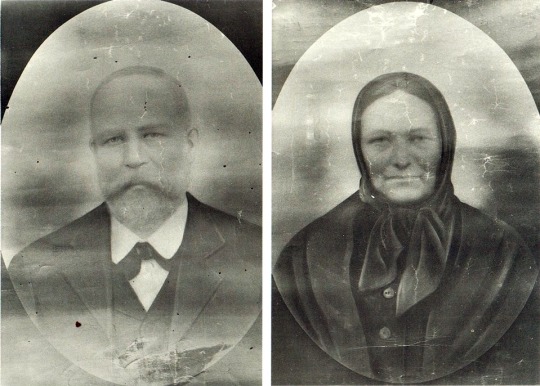
[Joaquín Gracia Anadón y María Antónia García Martín bisabuelos de Tina Aumont]
Joaquín Gracia Anadón - bisabuelo de Tina Aumont por parte de madre -, nació el 23 de mayo de 1841 en el municipio de Estercuel (Teruel), hijo de Pablo Gracia González, de la misma naturaleza, y de Tomasa Anadón Andrés, nacida en La Mata de los Olmos (Teruel). Sus abuelos paternos fueron Pedro Pablo Gracia y Ramona González, los maternos, Joaquín y María Teresa Andrés. Era bisnieto de Francisco Gracia e Isabel Ana Luño y de Francisco Anadón e Isabel Julve. Tomasa Anadón Andrés murió en Muniesa (Teruel) el 8 de mayo de 1867.
María Antonia García Martín - bisabuela de Tina Aumont por parte de madre -, nació en Garafía (La Palma), el 28 de septiembre de 1842. Era hija de Francisco Agustín García Medina y de María Antonia Martín Sánchez.
Cuando Joaquín Gracia Anadón tenía quince meses falleció su padre y junto a su madre se trasladó a casa de unos tíos en La Mata de los Olmos (Teruel), donde vivió durante su infancia y juventud. A la edad de 21 años fue llamado a filas e ingresa en el Batallón de Alcaníz. Más tarde fue enviado a la guerra de la isla de Santo Domingo y, terminada esta pasó a la isla de Cuba.
En Cuba conoció a María Antonia García Martín, que era natural de Garafía (las Palmas), ella era la mujer que sería su esposa.
Ambos contrajeron matrimonio, en la Iglesia de Nuestra Señora de la Luz de Garafía, el 17 de junio de 1872, inscrito en el Registro Civil del mismo municipio el 22 de abril de 1875. Establecieron el domicilio familiar en la Lomada de Santo Domingo, en el municipio de Garafia, lugar donde aún hoy se conserva la vivienda familiar.
El matrimonio del aragonés y la canaria tuvo seis hijos:
1. Isidoro, nacido el 3 de abril de 1873
2. Aquilino, nacido el 3 de enero de 1875
3. Tomasa, nacida el 31 de diciembre de 1876
4. Joaquín, nacido el 9 de mayo de 1878
5. Gaudencia, nacida el 12 de febrero de 1882
6. Agustín, que falleció menor
María Antonia García Martín, murió en Garafía el 21 de marzo de 1904, a los 61 años.
Joaquín Gracia Anadón, murió en Garafía, el 28 de febrero de 1913, a los 72 años de edad, de hemorragia cerebral.
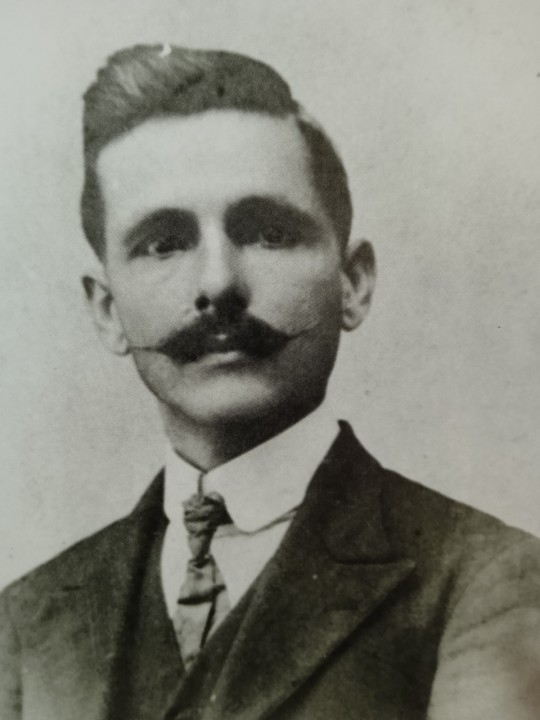
[Isidoro Gracia García, abuelo materno de Tina Aumont, fotografiado en su juventud]
Isidoro Gracia García nace en Garafía el 3 de abril de 1873, hijo de Joaquín Gracia Anadón, natural de Estercuel (Teruel), y de María Antonia García Martín, natural de Garafía, en la isla de La Palma.
Cuando Isidoro sólamente tenía diez años de edad fue sometido a un interrogatorio judicial, respecto del incendio de la Casa Consistorial de Garafía, cuyos cargos habían sido imputados a su padre. Este hecho, debió marcar de por vida a Isidoro Gracia García.
Las dificultades económicas de la familia obligaron a Isidoro y a su hermano Joaquín a emigrar en busca de fortuna, primero a Cuba y posteriormente a la República Dominicana, donde fijaron su residencia en la localidad de Barahona alrederores de 1904.
Isidoro se estableció como «comerciante de mucho crédito». Se dedicó a los prósperos negocios del textil y a la exportación de madera guayacán (Lignum vitae).
Su capacidad empresarial y sus facultades humanas le valieron el nombramiento por el entonces ministro de Estado (hoy, ministro de Asuntos Exteriores) como vicecónsul honorario, previa solicitud del Real Consulado de España en el país.
En Barahona fue donde Isidoro conoció a la que se convertiría en su compañera y, tras casi 16 años de convivencia, en su esposa, María Teresa Vidal Recio. Fruto de esta unión nacieron diez hijos. Isidoro y María Teresa contrayeron matrimonio el 7 de enero de 1925, para entonces ya habían nacido la mayoría de sus hijos. La segunda de estos fue María África Gracia Vidal, más conocida como María Montez en la gran pantalla, y los dos últimos vendrían después: Jaime, en 1927, y Teresa, en 1930.
A parte de esta numerosa descendencia, Isidoro tuvo otros dos hijos extramatrimoniales (Orbito y Gaudencio), y acogió a Antonio López (Toño), huérfano de un gran amigo. Se trataba así, de una gran familia.
Isidoro Gracia García fallece en Barahona en 1933.
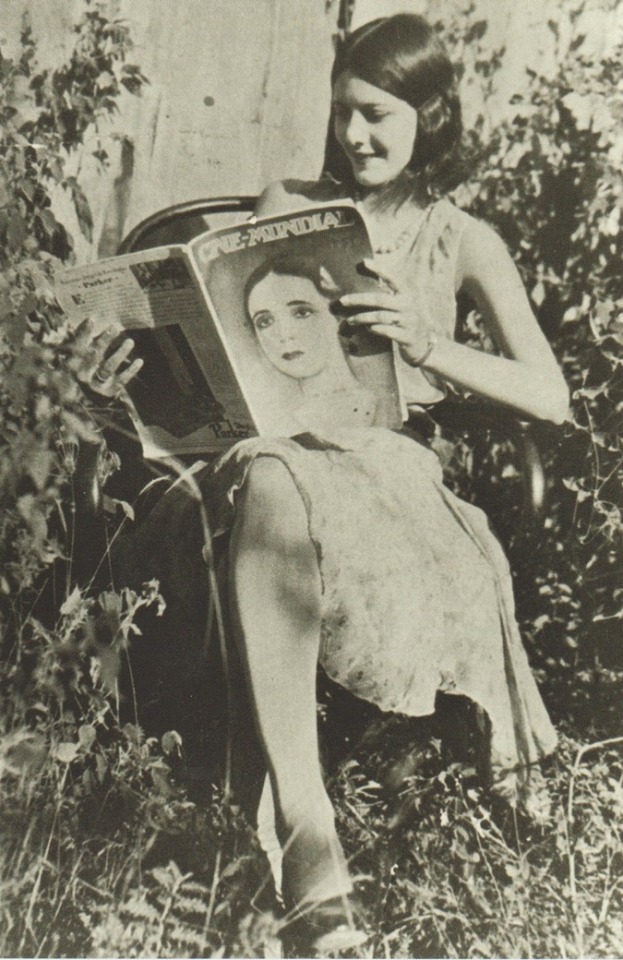
[María África Gracia Vidal fotografiada en 1930 antes de dar su salto a la fama]
A la orilla del mar Caribe, en Barahona (República Dominicana), nació, el 6 de junio de 1912, María África Gracia Vidal, hija del canario Isidoro Gracia García y de Teresa María Vidal, natural de Baní. Según sus biógrafos dominicanos, su nombre de pila fue deseo de su padre «en homenaje a su tierra natal, la Isla de la Palma (una de las Islas Canarias), que aunque pertenezca a España está localizada en el continente africano».
María fue la segunda de once hermanos: Isidoro, María África, Aquilino, Joaquín, David, Ada, Consuelo, Luz, Luis, Jaime y Teresita.
Desde pequeña, la futura actriz mostró interés por el teatro y el cine. Llegó a escribir pequeñas obras dramáticas que representaba ante sus amigos y familia. Aprendió inglés sin profesor alguno, contando sólo con asiduas lecturas en revistas y periódicos. Aún con estudios básicos, se atrevió con la publicación de tres libros y varios poemas sueltos, que firmaba con su verdadero nombre, María África Gracia.
Durante su vida María Montez mantuvo correspondencia con su primo Armando Gracia San Fiel (1913-1997) que residía en Madrid; las cartas muestran la personalidad sencilla de la actriz, próxima, comunicativa y curiosa por sus familiares palmeros coincidiendo con el momento en que ya se encontraba en la cumbre de su carrera cinematográfica.
La estrella también tuvo siempre presentes sus raíces aragonesas. En una carta de 1944 a su primo residente en Madrid, María contempla como posibles destinos para darle un hogar confortable a su madre "Barcelona o Teruel". En otro documento, afirma que está "muerta de curiosidad" por conocer todos los detalles posibles de la familia Gracia, un apellido "muy aragonés", según explica la investigadora María Victoria Hernández.
Entre los documentos analizados por la investigadora, Maria Victoria Hernandez, destaca una carta de 1944 en la que se puede leer: "Tan pronto se acabe la maldita guerra -la II Guerra Mundial-, mamá piensa ir a vivir a España, tal vez a Barcelona o Teruel para formar un hogar donde esté nuestra familia". En otra misiva de 1945 se interesa por "si hay buena universidad en Zaragoza" ante la expectativa de que estudien allí tres hermanos pequeños de la artista. También pide información sobre cuánto costaría en la capital aragonesa "alquilar un apartamento chico", y pregunta "cómo es el clima y qué tal es la vida allí".
María Montez se sentía orgullosa de su sangre paterna. Cuando en 1949 le preguntaron, en el Festival de Cine de Venecia, su verdadera nacionalidad, respondió:
«Pero, hijo mío, ¿de dónde cree usted que soy? ¿Acaso turca? Mi padre, palmero, y mi madre, dominicana, y mi verdadero apellido, Gracia. Esto de “Montez” es el postizo para el cine y el teatro»
El cariño por sus orígenes lo demuestra cuando, unos días antes de su muerte, el productor español Cesáreo González le ofrece hacer la película “La maja de Goya”. María declara a la prensa que la filmaría con su auténtico apellido, Gracia, y responde a un periodista francés: «Me eduqué en Santa Cruz de Tenerife, y he tenido siempre para todo lo español verdadera admiración. […] estoy segura que allí todos verán muy bien que yo trabaje con mi verdadero nombre, pero a nadie le habrá de satisfacer tanto como a mí».
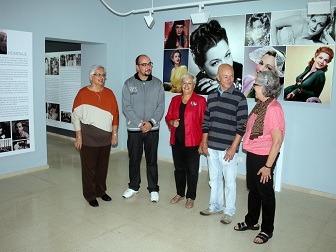
Foto de la inauguración de la exposición de María Montez, con la presencia del Sr. Alcalde Yeray Rodríguez, y de dos primas segundas de María Montez, Pilar García Pombrol y Pilar Cabrera Pombrol. Garafía, octubre de 2012. Del blog Garafia@s.
~*~ ~*~ ~*~
Fuentes consultadas:
Las raíces Turolenses de una diva (Heraldo, 26.10.2008)
Los Orígenes palmeros de la actriz María Montez (October/November 2009)
Personalidades Garafianas (12.2012)
La Exposición de María Montez viaja a Gran Canaria (El Apurón, 21.11.2013)
Dos Actrices Internacionales descendientes de un Luño (Plenas Zaragoza 14.12.2016)
Fotos del libro "María Montez La Reina del Tecnicolor", de Antonio Pérez Arnay (Filmoteca Canaria 1995) - Las fotos de este libro no están sujetas a ningún copyright.
#Gracia Family#Família Gracia#Joaquín Gracia Anadón#María Antónia García Martín#Isidoro Gracia García#María Montez#Armando Gracia San Fiel#Antonio Pérez Arnay#María Montez La Reina del Tecnicolor#Maria Montez#La Reina del Tecnicolor#The Queen of Technicolor#research#investigación#Maria Victoria Hernandez#Garafia#Barahona#ancestry#family history#genealogy#1930 Maria#2012 Maria
17 notes
·
View notes
Text
If you are in Madrid and you're looking for any cultural activities to do during weekends, let me tell you about Rutas teatrales. It's a very good group that organise themed guided routes around Madrid, among other things, mainly about writers and artists from 19 th and 20th centuries: Benito Pérez Galdós, Emilia Pardo Bazán, Federico García Lorca, María Teresa León, Maruja Mallo, Margarita Manso, Margarita Xirgu, Concha Méndez, Josefina de la Torre...
Guided and dramatized tours: The Madrid of Lorca; Las Sinsombrero and Lorca; The Summer Theatres; World Theater Day; Galdós, a playwright in Madrid; Doña Emilia
Spectator School (videos): The History of Theatre Pavón: Theatre in New York; Discover María Guerrero; Discovering Federico García Lorca; Theatre in Buenos Aires; How to write a play; Presents! Women in the city; Meetings with artists;The Madrid of Galdós; Theatre in London; Benilde de Patricia Suárez; Discovering Victorina Durán
Theatrical outings: Independent Theater Route; New Dramaturgies Route; Lorca Route
Online courses: Lorca and his theatre
#rutas teatrales#plans#madrid#guided tours#federico garcía lorca#benito pérez galdós#emilia pardo bazán#las sinsombrero#maría teresa león#maruja mallo#margarita manso#margarita xirgu#concha méndez#josefina de la torre
2 notes
·
View notes
Text
Honor
Honor (Serie 2023)
#DaríoGrandinetti #MaríaMorales #JoséLuisGarcíaPérez #MaraGuil #AminHamada #EmilioPalacios
Mehr auf:
SerieJahr: 2023-
Genre: Drama / Thriller
Hauptrollen: Darío Grandinetti, María Morales, José Luis García-Pérez, Mara Guil, Amin Hamada, Emilio Palacios, Cecilia Gómez, Fran Cantos, Joaquín Núñez, Paco Márquez, José Ramón Serra, Ana Peregrina, Mercedes León, Victoria Mora …
Serienbeschreibung: Nachdem sein Sohn ein Mitglied einer Mafiafamilie überfahren hat, tut ein ehrlicher und angesehener…

View On WordPress
0 notes
Text
De allá: “Exposición A mí me manda Carmen”, Colectiva

View On WordPress
#Aimée Joaristi#Aimée Pérez#Aimeé García#Alicia de la Campa#Anisley Lago Felipe#Cirenaica Moreira#De allá#Gabriela Martínez#Ivonne Ferrer#Jenny Macías#Katiuska Saavedra#Leticia Sánchez Toledo#Lia Galleti#Lilian Cedeño#Linet Sánchez#Lorena Gutiérrez#Marianela Orozco#Marta María Pérez Bravo#Mónica Batard#Milena Martínez Pedrosa#Olympia Ortiz Porcegué#Rocío García#Sandra Ceballos#Yaily Martínez Molina#Yanet Martínez Molina
0 notes
Text
Mi crítica del concierto de proyectoeLe esta noche en el Espacio Turina.
#proyectoele#carlos cansino pérez#luis vicente marín#francisco escalante#vinko globokar#esaac diego garcía fernández#thierry de mey#maría pérez díaz#georges aperghis#josé manuel gil del valle#música#music
1 note
·
View note
Text
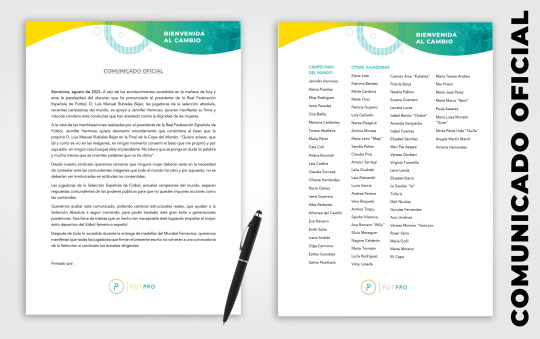
Barcelona, August 2023. As a result of the events that took place this morning and the perplexity of the speech made by the president of the Royal Spanish Football Federation, Mr. Luis Manuel Rubiales Béjar, the players of the senior national team, recent world champions, in support of Jennifer Hermoso, wish to express their firm and resounding condemnation of conduct that has violated the dignity of women.
In view of the statements made by the president of the Royal Spanish Football Federation, Jennifer Hermoso wishes to categorically deny that she consented to the kiss that was given to her by Mr. Luis Manuel Rubio at the World Cup Final. "I want to clarify that, as was seen in the images, at no time did I consent to the kiss he gave me and, of course, in no case did I seek to lift up the president. I do not tolerate my word being called into question and much less that they invent words that I did not say".
From our union we want to stress that no woman should have to answer back to the blunt images that everyone has seen and, of course, they should not be involved in unacceptable attitudes.
The players of the Spanish national football team, current world champions, expect strong responses from the public authorities so that actions such as those contained in this document do not go unpunished.
We would like to end this statement by calling for real structural changes that will help the national team to continue to grow, in order to be able to pass on this great success to future generations. It fills us with sadness that such an unacceptable act is tarnishing the greatest sporting success of Spanish women's football.
After everything that happened during the Women's World Cup medal ceremony, we would like to state that all of the players who have signed this letter will not return to a call-up to the national team if the current management continues.
Signed:
FUTPRO
WORLD CHAMPIONS
Jennifer Hermoso
Alexia Putellas
Misa Rodríguez
Irene Paredes
Ona Batlle
Mariona Caldentey
Teresa Abelleira
María Pérez
Cata Coll
Aitana Bonmati
Laia Codina
Claudia Zomoza
Oihane Hemández
Rocío Gálvez
Irene Guerrero
Alba Redondo
Athenea del Castillo
Eva Navarro
Enith Salón
Ivana Andrés
Olga Carmona
Esther González
Salma Paralluelo
OTHER PLAYERS
Elene Lete
Fiamma Benítez
Marta Cardona
Maite Oroz
Patricia Guijarro
Lola Gallardo
Nerea Eizagirre
Ainhoa Moraza
Maria León “Mapi”
Sandra Paños
Claudia Pina
Amaiur Sarriegi
Leila Ouahabi
Laia Aleixandri
Lucia García
Andrea Pereira
Vero Boquete
Ainhoa Tirapu
Sandra Vilanova
Ana Romero "Willy”
Silvia Meseguer
Nagore Calderón
Marta Torrejón
Lucía Rodríguez
Vicky Losada
Carmen Arce "Kubalita”
Maria Teresa Andreu
Priscila Borja
Mar Prieto
Natalia Pablos
María José Perez
Susana Guerrero
María Marco “Beni”
Larraitz Lucas
Paula Kasares
Isabel Benito “Chabe”
María Luisa Monzón “Gusa”
Amanda Sampedro
Isabel Fuentes
Nines Pérez Urda “Quilla”
Elisabet Sánchez
Angela Martín Martín
Mari Paz Azagra
Victoria Hemandez
Vanesa Gimbert
Virginia Torrecilla
Leire Landa
Elisabet Ibarra
Isi Gavilán “Isi”
Toña Is
Meli Nicolau
Gurutze Fernandez
Auxi Jiménez
“Vanesa Moreno "Vane”
Roser Serra
María Goñi
Marta Moreno
676 notes
·
View notes
Text

history of magic lessons: the first wizarding school
The wizards in Spain had always existed, but they were often prosecuted by the Roman Catholic Church. That is, until the Arab Invasion. They were more lenient on them and gave them treaties and rights, as long as they respected the Islamic Regime and their laws, and they did.
Hence, four of the brightest spanish wizards of the time built up what would be a long-time school that accepted people born with magic from the Spanish empire: El Punto Mágico, Escuela para Jóvenes con Habilidades Extraordinarias or, The Magic Spot, A School for Young People with Extraordinary Abilities. During the years of Isabella I, they had to be a clandestine school, taking in children for the nine months of the year: from the 15th of September to the 10th of June, only making exceptions for war and marriage.
Their founders were four exceptional wizards: Soledad Delgado, the most erudite female wizard of all Spain, specialized in history, defence against the dark arts and charms. Her younger sister, Sancha, was a lover of animals and all creatures, and possesed elemental magic: she could manipulate air. Every animal, no matter how domestic or dangerous, obeyed her every command, and was a fearsome woman, especially by Charles V. Their father, Pedro, was a skilled warrior who had served many kings, and was specialized in the dark arts and could manipulate fire. His wife, Juana, was his best ally and accomplice, and a very wealthy woman. Thanks to her fortune, they could fund the empire. The moment Philip III reigned and the mighty Spanish Empire started to decay, El Punto Mágico gained popularity and more people applied with very to no fear to the school, and was a haven to those accused of witchcraft by the king.
In 1856, Queen Isabella II of Spain conceded them a secret treaty to teach under her laws as long as they remained loyal to her. When she was exiled by The Glorious Rebellion, they allied themselves with the Provisionally Government, Amadeo I, then the First Republic that lasted 11 months and finally Alfonso XII.
During the Civil War, it also affected its students and anarchy reigned over the school. Classmates were arrested, beaten, snitched on and even killed on the hallways. The moment the war was over, Francis Franco ordered the school to close or he'd bombard it. They had no option but obey.
It was when Felipe VI came to the throne, that he allowed the descendants to re-open the school if they could get at least 10k students from Hispanic origin. The goal was made, and to this day, though a minor school, it thrives in Spain. Every year, over 500 new students join this historic school.
Irene Escolar as Soledad Delgado
María Valverde as Sancha Delgado
Ginés García Millán as Pedro Delgado
Clara Sanchis as Juana Pérez
Idea by @gaygryffindorgal
25 notes
·
View notes
Photo

🏛️🏺🗺️🛕🏯
The Basics
Name: Sidney Spillane
Birthdate: February 5, 1904
Birthplace: New Orleans, Louisiana, the United States
Occupation: professor of archaeology, primarily
Specialism: traveler
Skills: charm, athleticism, guns
Love interest(s): María García Pérez (formerly), Lady Esmerelda Hortensia Frideswide Hildegunde Fairfield
Background
Sidney Spillane was born in 1904 in New Orleans, Louisiana, the only child of Olivia – a commercial artist specialising in making hand-painted cover illustrations for books at a small local publishing company, and Stephen Spillane, who was a journalist focusing primarily on book reviews and drama criticism, but later graduated to lead editor owing to his relentless but effective self-promotion.
As a child, Sidney was surrounded by books depicting travel and adventure, which played a big part in shaping his personality – making him fiery, outgoing and competitive, but also easily frustrated by losing a game, or by not being able to learn something fast enough. Still, the boy definitely excelled when it came to academic studies. He kept himself well-versed and well-read, which, while praised by teachers, had the unfortunate effect of causing him to be known as an irksome smart alec among his peers, although still genuinely liked by many.
His mother Olivia felt strongly about reading and education, and subtly pushed him toward academic success, but she also tried to foster her child's other interest, talents and imagination. By contrast, his father was a strict, career-oriented by-the-book type, who expected his son to always be respectful and dutiful, but instead got a son that was energetic and inquisitive, although some might say excessively so. In 1916 Stephen was appointed to a committee which was responsible for raising American support for the war effort – he wrote articles, organised campaigns, and formal talks to motivate the American people. The public opinion was shifting, but not fast enough, and so he was sent to Europe to gather first-hand material that would indisputably inspire the populace. With him gone abroad, Olivia invited her widowed father to help around the house, but most importantly to spend time with Sidney, and keep him occupied and out of trouble.
His grandfather provided him with the rare gift of freedom of exploration, and exposed him to various activities that roused Sidney’s imaginative curiosity – the two would enjoy spending time together, take long walks, enjoy a closeness with nature, and develop an understanding of their family history. Sidney began to develop an interest in archaeology at the age of twelve when he first felt a surge of inspiration and elation after a chance discovery during his long walks with grandpa Jack of what appeared to be a damaged terracotta figurine. Of course, his discovery was not an ancient relic – merely a discarded decorative piece of a miniature vase, but it was enough to make him start asking questions. Imagining that the piece was indeed a treasure from days long past, Sidney wanted to know which tools were used to make it, who the person that made it was and what their daily life was like, how they interacted with others and what they valued and hoped for.
His adventures with grandpa Jack came to a halt when the latter passed away, however. Unable to confront this personal tragedy and besieged by loneliness, Sidney became irresponsible and reckless in his attempt to run away from it. Many people, including his supremely disappointed father, decided to distance themselves from him without offering any kind of support or consolation. The silver lining through it all was the fact that Sidney’s curiosity and thirst for knowledge were not fully diminished, and, with a newly discovered zeal, he threw himself back into studying, in no small part motivated by the memory of the discovery he had made at the age of twelve. Both his inspiration and the weight of his academic accomplishments remained misunderstood by many, although Sidney was more than happy to put his quick mind to good use once again. Soon enough he was able to leave the family nest after graduation in order to follow his passion and boldly traverse through the world yet unknown to him.
Personality
“If I’m so annoying, why not just kill me?”
Upon reaching adulthood, Sidney managed to hone the traits he was known for in his childhood into finer qualities – many now call him courageous, enthusiastic, outspoken, and often refer to him as someone who can enjoy a good challenge while being sporting about it. However, in his heart, he did not change much from the idealistic youth he once was, and never truly gave up on the heroic stories that had a hand in shaping his personality – filled to the brim with endless energy, Dr. Sidney Spillane is an optimist who approaches life with curiosity and a sense of adventure, and is able to look at the world with an anticipation of all the exciting things he can experience, despite not being a stranger to heartache. Those who admire Sidney laud him for being unafraid of facing danger and long odds. Meanwhile his critics would say that he is full of hot air, and is frivolous in his desire to disobey rules and conventional behaviour.
Indeed, Sidney is not afraid to openly question certain traditions and mock those in position of authority, encourage spontaneity and enthusiasm in his students and friends, and inspire other people to seek out new and unconventional experiences. He is naturally eloquent with words, empathetic, adept at both genuine flattery and sugarcoating, is able to lead people on without ever becoming obvious that he is, and possesses the cunning to twist his words for a purpose – making him a good actor when he chooses to. Still, while his charming and casual attitude easily wins people over in most everyday scenarios, it can easily come across as intensely annoying and frustrating when he is unable to tone it down in dangerous situations, oftentimes leading to unpleasant results.
Still, much to the surprise of his naysayers (most of whom are his stuffy colleagues that refuse to look past the outward expression of his personality), Sidney is an incredibly skilled and passionate teacher, and his academic achievements are worthy of praise. He excels at supporting his students with empathy and wit, although he can just as easily point out genuine mistakes, or when their behaviour crosses a line when needed. He applies his good sense of humor to most of his lectures and organised digs, believing that it is important to keep the interaction with one another lighthearted, laugh about past experiences in the field, swap stories and bounce ideas off one another. Many would describe him as having exceptional people and communication skills, and having a natural inclination for leadership; and while it is true that he would try his best to stand up for others, be a good listener, and keep them out of harms way, Sidney is not particularly introspective or adept at dealing with his own negative emotions such as frustration, loneliness, uncertainty, anxiety, and so on. He tends to become unfocused and somewhat irritable when having to deal with these feelings and, instead of trying to work through them, begins seeking out thrilling experiences in order to stave off all negativity. Yet he fails to see that this approach is not sustainable in the long run, and eventually leads him to feeling jaded and cynical, which in turn causes him to seek out even more distractions, often bordering on addictions – anything that would keep him from experiencing boredom or having to face the more negative aspects of himself.
A turning point in his life happened in the summer of 1938, when, after losing the competition organised by Lord Hugo de Beaulieu, and witnessing the passing of a good friend, Sidney had to make the conscious decision to slow down, face his own insecurities and try to become a person that is willing to be more introspective and willing to deal with the dark, painful and upsetting aspects of life. In truth, this change was motivated in no small part by his dawning understanding that he wants to be a steady presence in Esme’s life and provide her with love and security. Evidently, it was not an overnight change, but he allowed himself to approach life at a slower pace, no longer completely afraid of having to deal with hardships, and emerged as a person that matured but still maintained his child-like wonder about even the smallest gifts of joy life has to offer – no longer viewing them as distractions, but truly taking the time to appreciate and enjoy them with the people that matter to him.
Likes: travel, spending time with his family, large and goofy dog breeds, cuisine from across different cultures, social events with dancing and music, the thrill of trying something new for the first time, receiving mail from fans
Dislikes: petty gossip, Esme’s culinary preferences, lame nicknames, finding a raisin in a pastry that should not have raisins in it, military types, not being prepared for cold weather, humourless people
Miscellaneous
He suffers from arachnophobia.
After receiving his college degree and deciding to pursue his doctorate abroad, he took a gap year before finally applying to Oxford. During that year, he travelled across Europe, where he found charming corners to explore, took on different jobs, met new people and learned from them, tried the local cuisine, and more. In truth, he was afraid of sticking out like a sore thumb among the Brits, and wanted to take the time to work on his charm.
He received a lot of scars during his adventures, but the one that invites the most exciting party talk is the one left from a massive shark bite that could have put an end to his adventuring days right then and there. The stories of how he got it become more and more outrageous with every retelling.
Even though he is sufficiently athletic, he never really learned how to fight. However, if he is forced into a situation that cannot be resolved by laying on the charm, he would attempt to employ a chaotic fighting style that resembles a spinning windmill. Sometimes it works, most of the times he gets punched in the face.
Stevo gave him the nickname Bonesy.
Knows Cary Grant, apparently. Is it the truth, though?
He considers the tiny decorative vase he had found during one of his outings with grandpa Jack to be a precious family heirloom, and takes great care of it years after making the discovery with plans of passing it down to his daughter.
#relics of the lost age#interactive fiction#another convoluted wiki-type character write-up#i've been marinading him in my mind for over a year now#two years?#ahh but i do enjoy making these#even though my english is getting rusty without practice#i'll need a tag for this later
9 notes
·
View notes
Text

inspired by the newest Barbie trailer (x)

#trying 2 get back into drawing again and felt it high time to draw maría/helene college shennanigans#ok tbf maría's hairstyle aint like the one in my old doodle but like. im still trying to nail it down ok#n e way. muah <3#relics of the lost age#relics series#relics series my beloved#relics mc#helene spillane#maría garcía pérez#maría garcía pérez my beloved#fan art#my art#lee draws#lee draws stuff
32 notes
·
View notes
Note
(My bro-Spillane, RE: Worlds Collide: *lifts Cleo over his head with his ginormous athlete’s arms* THIS right here is best girl, fool! (🙏 And please don’t try to fight him on this, he will die on this hill and take you with him)
Oh no! Kai's stirred up a Best Girl War!
6 notes
·
View notes
Text

EL ORIGEN DE LOS APELLIDOS.
En la antigüedad, no existían los apellidos. Tomemos la Biblia, por ejemplo… a los personajes del Antiguo y Nuevo Testamento se les conocía por su nombre: Abraham, Moisés, Pedro, Juan, Mateo, Jesús, María y José. No había tal cosa como Abraham Pérez, Mateo Delgado o José García. (Cuidado: Iscariote no era el apellido del traidor Judas, ni Tadeo el del santo; eran sobrenombres, apodos).
Con el tiempo, las comunidades se poblaban cada vez más y más, y de momento surgían las dudas:
—Llévale este mensaje a Juan.
—¿Cuál Juan? —preguntaba el mensajero.
—Pues Juan, el "del valle" —explicaba para distinguirlo del otro Juan, el "del monte".
En este caso, los apellidos del Valle’ y del Monte, tan comunes hoy en día, surgieron como resultado del lugar donde vivían estas personas. Estos se llaman "apellidos topónimos", porque la toponimia estudia la procedencia de los nombres propios de un lugar. En esa misma categoría están los apellidos Arroyo, Canales, Costa, Cuevas, Peña, Prado, Rivera (que hacen referencia a algún accidente geográfico) y Ávila, Burgos, Logroño, Madrid, Toledo (que provienen de una ciudad en España).
Otros apellidos se originan de alguna peculiaridad arquitectónica con la que se relacionaba una persona. Si tu antepasado vivía cerca de varias torres, o a pasos de unas fuentes, o detrás de una iglesia, o al cruzar un puente, o era dueño de varios palacios, pues ahora entiendes el porqué de los apellidos Torres, Fuentes, Iglesias, Puente y Palacios.
Es posible que hayas tenido algún ancestro que tuviese algo que ver con la flora y la fauna. Quizás criaba corderos, cosechaba manzanas o tenía una finca de ganado. De ahí los apellidos Cordero, Manzanero y Toro.
Los oficios o profesiones del pasado también han producido muchos de los apellidos de hoy en día. ¿Conoces a algún Labrador, Pastor, Monje, Herrero, Criado o Vaquero? Pues ya sabes a qué se dedicaban sus antepasados durante la Edad Media.
Otra manera de crear apellidos era a base de alguna característica física, o un rasgo de su personalidad o de un estado civil. Si no era casado, entonces era Soltero; si no era gordo, era Delgado; si no tenía cabello, era Calvo; si su pelo no era castaño, era Rubio; si no era blanco, era Moreno; si tenía buen sentido del humor, era Alegría; si era educado, era Cortés.
Quizás la procedencia más curiosa es la de los apellidos que terminan en -ez, como Rodríguez, Martínez, Jiménez, González, entre otros muchos que abundan entre nosotros los hispanos. El origen es muy sencillo: -ez significa "hijo de". Por lo tanto, si tu apellido es González es porque tuviste algún antepasado que era hijo de un Gonzalo. De la misma manera, Rodríguez era hijo de Rodrigo, Martínez de Martín, Jiménez de Jimeno, Sánchez de Sancho, Álvarez de Álvaro, Benítez de Benito, Domínguez de Domingo, Hernández de Hernando, López de Lope, Ramírez de Ramiro, Velázquez de Velasco, y así por el estilo.
Así mismo ocurre en otros idiomas: Johnson es hijo de John en inglés (John-son); MacArthur es hijo de Arthur en escocés; Martini es hijo de Martín en italiano.
Es así como, poco a poco, durante la Edad Media, comienzan a surgir los apellidos. La finalidad era, pues, diferenciar una persona de la otra. Con el tiempo, estos apellidos tomaron un carácter hereditario y pasaron de generación en generación con el propósito de identificar no solo personas, sino familias.
De Leugim Legna.
14 notes
·
View notes
Text
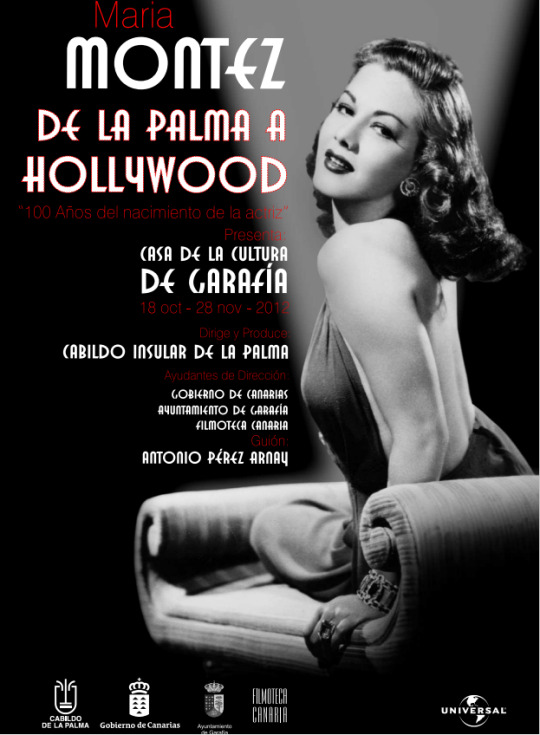

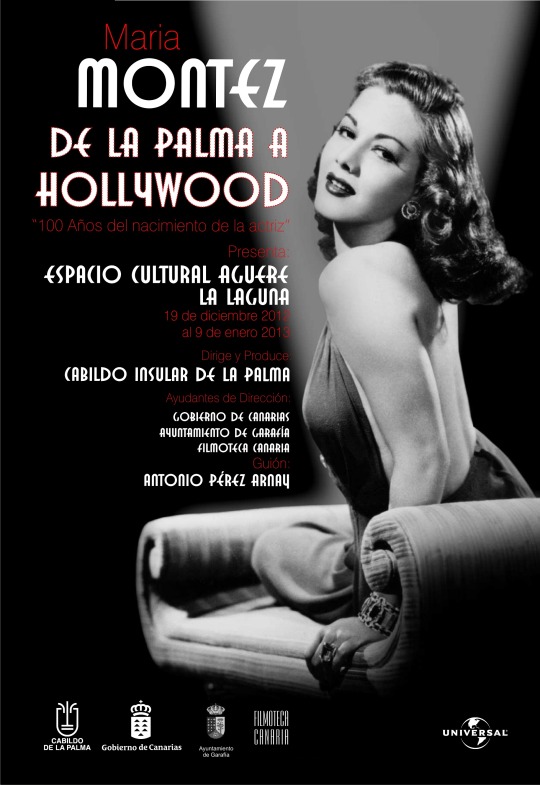
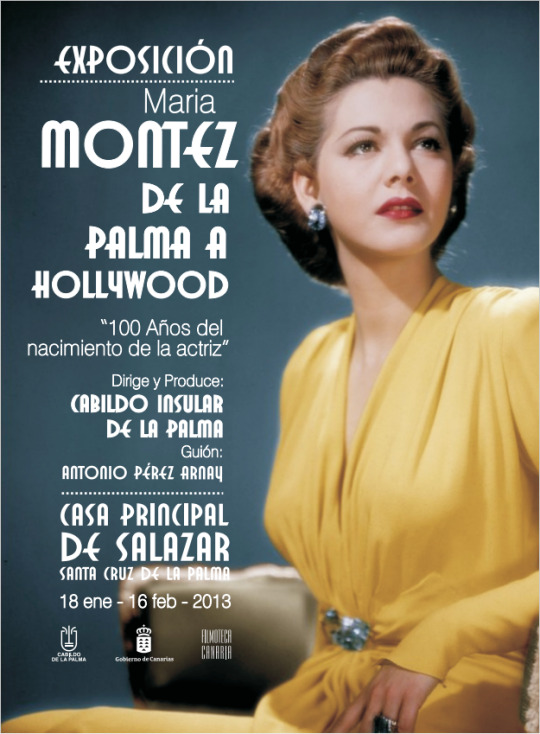
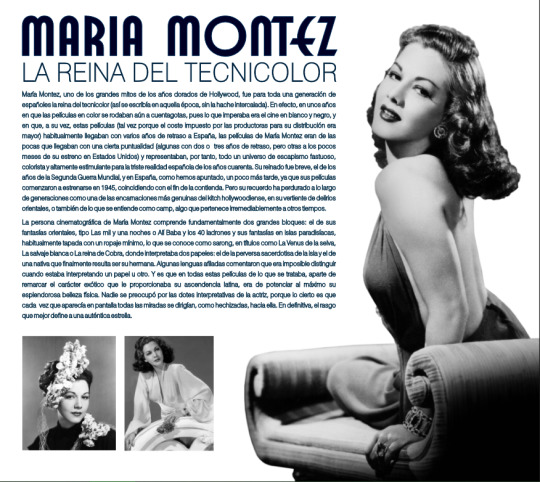
I want to thank my friend @74paris who contacted the Canarian Authorities and sent him these digitalized photos from the exhibit that Garafia and La Palma had about Maria Montez back in 2012 (more than ten years ago!!)
Maria Montez dad, Isidoro Gracia García was born in Garafia (La Palma) in April 3rd 1873 and by 1904 he settled in Barahona (Dominican Republic) with his brother Joaquín. They left Carany Islands due to economic struggles and they dreamt for a better future, which eventualy came.




These photos show Joaquín (left) and Isidoro (right) pictured in Barahona in 1908. Next we can see Isidoro Gracia pictured in Barahona in 1906. Under these two photos, Isidoro is pictured, again in Barahona, this time in 1909 and the last photo shows Joaquín in an undated photo, but my guessing is that it was taken in Barahona as well aroung the time the other photos were taken (1906-1909).
These photos were displayed in "María Montez, de la Palma a Hollywood" exhibition celebrated in Garafia and La Palma during the celebrations of MAría Montez birthday centenary.

Joaquín Gracia Anadón, who was born in Estercuel (Teruel-Aragón-Spain), in 23rd May 1841 and María Antónia García Martín, who was born in Garafia, (La Palma, Canary Islands) in 28th September 1842 were also remembered in this exhibition.

This beautiful photo taken in 1942 celebrating Doña Justa's birthday was also in the exhibition. Doña Justa Recio Sánchez was María Montez granny and Regla María Teresa Vidal Recio's mother. In this photo we can see at the left Adita with her mother, and at the right we can see Consuelo. In the front row, at the right we can see a very young Teresita. It's beautiful to see that in this exhibition, also the maternal side of María was important although there were no Canarian roots in them (as far as we know).

María Montez most intimal side was also shown in this exhibition, here we can see her pictured in 1943 at her wedding day to Jean-Pierre Aumont.
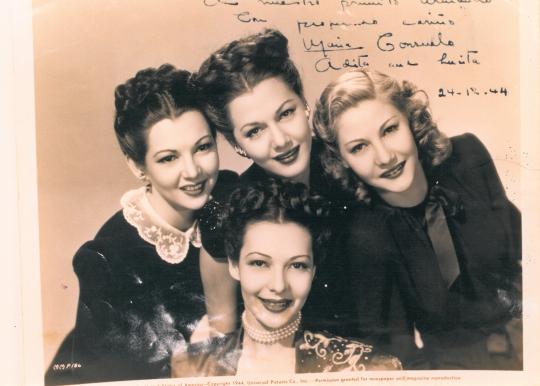
While Jean-Pierre Aumont was away fighting in II World War and María was at the highest point of her career, she invited her sisters to Hollywood as she wanted them to have a successful career. Although all of them tried, only Teresita (not shown here as she was still very young) succeed but as a High Couture model working in France in the 50s hired exclusively by Vogue magazine.


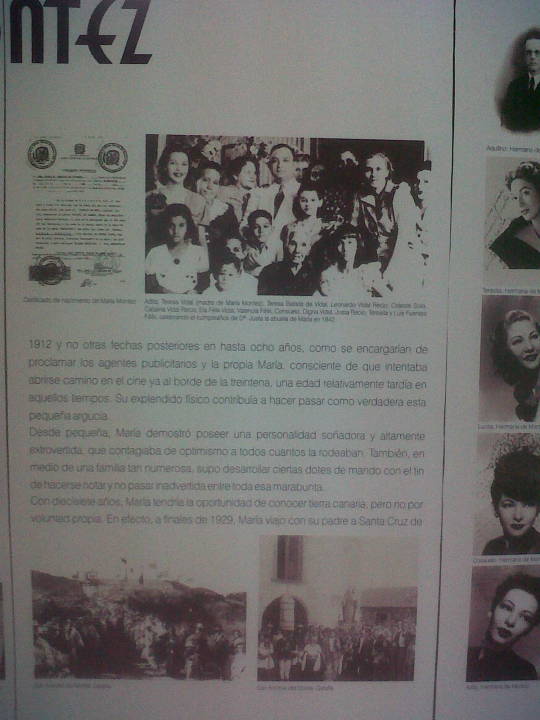
These photos are from the banners displayed in "María Montez, de la Palma a Hollywood" exhibition held in La Laguna, Tenerife (Canary Islands) in 2012, they show María's family, sisters, daughter Tina and places where her family came from. These photos come from this blog: Personalidades Garafianas


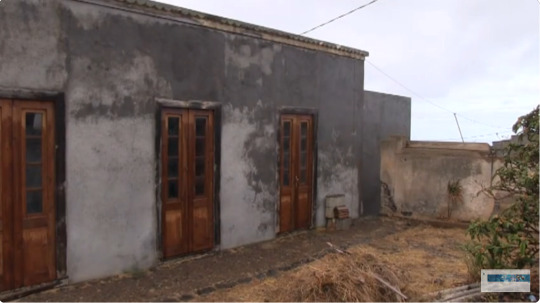
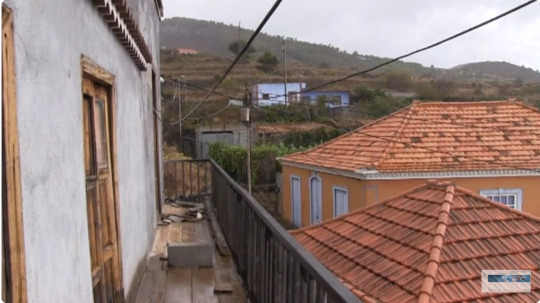




These screencaps from this video show two banners from the exhibition "María Montez: De La Palma a Hollywood" with Maria Montez and Jean Pierre Aumont and Maria's dad Isidoro, her granny María Antónia and on the left Isidoro and his brother Joaquín.
The other screencaps show Joaquín Gracia and María Antónia García's home in Garafia where Isidoro, Joaquín and their siblings were born.
This house is still standing, now I wonder... could a María Montez museum will be made here and be permanent so everybody could visit it? I vote for it, but I don't know if it will ever me made, it would be beautiful if ever that happen...
Here you have the Villa de Garafia website where is explained the exhibition.
Photos shown here are courtesy of Armando Gracia Sanfiel, the Spanish cousin María was always writing. He gave these photos to Antonio Perez Arnay to be published in his book "María Montez La Reina del Tecnicolor" (Filmoteca Canaria, 1995).
Banners courtesy of "Cabildo de la Palma", the governing and administrative body of La Palma.
Muchas gracias de nuevo @74paris por todo el trabajo que has hecho contactando con la administración del Cabildo de la Palma para que te enviaran este material tan precioso y muchas gracias por compartirlo conmigo para que lo publique.
#Maria Montez#2012 Maria#Maria Montez: De la Palma a Hollywood#De la Palma a Hollywood#Joaquín Gracia Anadón#Isidoro Gracia García#Joaquín Gracia García#María Antónia García Martín#Justa Recio Sánchez#Teresa Vidal Recio#Adita Gracia Vidal#Lucita Gracia Vidal#Consuelo Gracia Vidal#Teresita Montez#exhibition#Cabildo de la Palma#Armando Gracia Sanfiel#Antonio Pérez Arnay#Gracia Family#Montez Family
10 notes
·
View notes
Text
My 2023 Reading List
Here's the books and articles that I read in 2023 (a large part of which was a push to finish my dissertation). I thought it might also be useful to others to see what my workload looks like as a 7th year grad student in a PhD. program, especially since I'm unmedicated with severe ADHD. This is what I'm able to get done while fighting through that. I bring this up because I know that it can seem fucking impossible, most notably when we see our neurotypical colleagues churning through incredible amounts of research. A final note: two of the books I'm including in here are books that I started reading in 2022 (Kagan and Stock). Also, note that many of these are re-reads; I've marked these with an Asterisk, and a couple of the books I read around 90%, but dropped a couple chapters that weren't relevant for my projects. These are marked with two asterisks. Be aware that my citations here are of a pretty rough and ready style. Philosophy has weird disciplinary standards (read, almost every journal is different), so I just have a "here's what you need to know to find it" style here.
CW: I work on some dark things involving death, suicide, sexual assault, sex, race, and trans rights, including actively fighting trans-exclusive theorists, so there's a lot of possibly triggering things in here.
Updated: Jan 4, 2024
Abdollah, Serajian, Ebrahim Khosrow, and Sajad Ahmadizad. 2014. “Comparison of Anthropometric and Functional Characteristics of Elite Male Iranian Fencers in Three Weapons.” International Journal of Applied Sport Sciences 26 (1): 11–17.
Alcoff, Linda. 1991. “The Problem of Speaking for Others.” Cultural Critique No. 20 5–32.
Alcoff, Linda. 2007. “Epistemologies of Ignorance: Three Types.” In Race and Epistemologies of Ignorance, edited by Shannon and Tuana Sullivan, Nancy, 39–50. Albany: State University of New York Press.
Anderson, Elizabeth. 2012. “Epistemic Justice as a Virtue of Social Institutions.” Social Epistemology 26 (2): 163–73.
Andler, Matthew. 2017. “Gender Identity and Exclusion: A Reply to Jenkins.” Ethics
Ashley, Florence. 2023. “What is it Like to Have a Gender Identity.” Mind 132 (528): 1053–73.
Ballantyne, Nathan. 2019. “Epistemic Trespassing.” Mind 128 (510): 367–95.
Ballantyne, Nathan, Jared Celniker, and David Dunning. 2022. “Do Your Own Research.” Social Epistemology
Barnett, Brian S, Ariana E Nesbit, and Reneé M Sorrentino. 2018. “The Transgender Bathroom Debate At the Intersection of Politics, Law, Ethics, and Science.” J Am Acad Psychiatry Law 46 (2): 232–41.*
Berg, Amy. 2022. “Is There a Duty to Read the News.” Journal of Moral Philosophy 20 (3-4): 243–67.
Bergero-Miguel, Trinidad, María A García-Encinas, Amelia Villena-Jimena, Lucía Pérez-Costillas, Nicolás Sánchez-Álvarez, Yolanda de Diego-Otero, and Jose Guzman-Parra. 2016. “Gender Dysphoria and Social Anxiety: An Exploratory Study in Spain.” J Sex Med 13 (8): 1270–78.*
Bettcher, Talia Mae. 2009. “Trans Identities and First-Person Authority.” In You’Ve Changed: Sex Reassignment and Personal Identity, edited by Laurie Shrage, 98–120. Oxford University Press.*
Biggs, Michael. Suicide By Trans-Identified Children in England and Wales. Transgender Trend.*
Blair, Karen L., and Rhea Ashley Hoskin. 2019. “Transgender Exclusion From the World of Dating: Patterns of Acceptance and Rejection of Hypothetical Trans Dating Partners as a Function of Sexual and Gender Identity.” Journal of Social and Personal Relationships 36 (7): 2074–95.
Blanchard, Matt, and Barry Farber. 2016. “Lying in Psychotherapy: Why and What Clients Don’t Tell Their Therapist About Therapy and Their Relationship.” Counselling Psychology Quarterly 29 (1): 90–112.
Blanchard, Matt, and Barry Farber. 2020. “”It is Never Okay to Talk About Suicide”: Patients’ Reasons for Concealing Suicidal Ideation in Psychotherapy.” Psychother Res 30 (1): 124–36.
Bochicchio, Lauren, Kelsey Reeder, Lauren Aronson, Charles McTavish, and Ana Stefancic. 2021. “Understanding Factors Associated With Suicidality Among Transgender and Gender-Diverse Identified Youth.” LGBT Health 8 (4): 245–53.
Bradley, Ben. 2012. “Doing Away With Harm.” Philosophy and Phenomenological Research 85, No. 2 390–412.*
Brown, Brookes. 2023. “Bearing Witness: The Duty of Non‐indifference and the Case for Reading the News.” Pacific Philosophical Quarterly 104 (2): 368–91.
Bustos, Valeria P, Samyd S Bustos, Andres Mascaro, Gabriel Del Corral, Antonio J Forte, Pedro Ciudad, Esther A Kim, Howard N Langstein, and Oscar J Manrique. 2021. “Regret After Gender-Affirmation Surgery: A Systematic Review and Meta-Analysis of Prevalence.” Plast Reconstr Surg Glob Open 9 (3): e3477.*
Byrne, Alex. 2020. “Are Women Adult Human Females.” Philosophical Studies 177 (12): 3783–803.
Carel, Havi, and Ian Kidd. 2014. “Epistemic Injustice in Healthcare: A Philosophical Analysis.” Med Health Care Philos 17 (4): 529–40.
Cattien, Jana. 2019. “Against “Transracialism”: Revisiting the Debate.” Hypatia 34 (4): 713–35.
Clements-Nolle, Kristen, Rani Marx, and Mitchell Katz. 2006. “Attempted Suicide Among Transgender Persons: The Influence of Gender-Based Discrimination and Victimization.” Journal of Homosexuality 51 (3): 53–69.*
Congdon, Matthew. 2018. ““Knower” as an Ethical Concept: From Epistemic Agency to Mutual Recognition.” Feminist Philosophy Quarterly 4 (4):
Costa, Rosalia, and Marco Colizzi. 2016. “The Effect of Cross-Sex Hormonal Treatment on Gender Dysphoria Individuals’ Mental Health: A Systematic Review.” Neuropsychiatr Dis Treat 12 1953–66.*
Crichton, Carel, & Kidd. 2017. Epistemic Injustice in Psychiatry. BJPsych Bulletin. 41:65-70.
Crocker, David. 1991. “Insiders and Outsiders in International Development.” Ethics and International Affairs 5 149–73.
Cullison, Andrew. 2010. “On the Nature of Testimony.” Episteme
Daniels, Norman. 2015. “Why We Should Care About the Social Determinants of Health.” Am J Bioeth 15 (3): 37–38.
Davey, Amanda, Walter Pierre Bouman, Caroline Meyer, and Jon Arcelus. 2015. “Interpersonal Functioning Among Treatment-Seeking Trans Individuals.” J Clin Psychol 71 (12): 1173–85.*
Davey, Amanda, Walter Pierre Bouman, Jon Arcelus, and Caroline Meyer. 2014. “Social Support and Psychological Well-Being in Gender Dysphoria: A Comparison of Patients With Matched Controls.” J Sex Med 11 (12): 2976–85.*
Davis, Emmalon. 2016. “Typecasts, Tokens, and Spokespersons: A Case for Credibility Excess as Testimonial Injustice.” Hypatia 31 (3): 485–501.
Dees, Richard H. 2019. “Primum Non Nocere Mortuis: Bioethics and the Lives of the Dead.” Journal of Medicine and Philosophy 44 (6): 732–55.
Dembroff, Robin. 2020. “Beyond Binary: Genderqueer as Critical Gender Kind.” Philosophers’ Imprint 20 (9): 1–23.*
Dembroff, Robin, and Dennis Whitcomb. Forthcoming. “Content-Focused Epistemic Injustice.” Oxford Studies in Epistemology*
DiPaolo, Joshua. 2022. “What’s Wrong With Epistemic Trespassing.” Philosophical Studies 179 (1): 223–43.
DiPaolo, Joshua. Forthcoming. “”I’m, Like, a Very Smart Person” on Self-Licensing and Perils of Reflection.” Oxford Studies in Epistemology
Dormandy, Katherine. 2018. “Epistemic Authority: Preemption or Proper Basing.” Erkenntnis 83 (4): 773–91.
Dotson, Kristie. 2008. “In Search of Tanzania: Are Effective Epistemic Practices Sufficient for Just Epistemic Practices?” Southern Journal of Philosophy 46 (S1): 52–64.*
Dotson, Kristie. 2011. “Tracking Epistemic Violence, Tracking Practices of Silencing.” Hypatia 26 (2): 236–57.*
Dotson, Kristie. 2012. “A Cautionary Tale: On Limiting Epistemic Oppression.” Frontiers: A Journal of Women Studies 33 (1): 24–47.*
Dotson, Kristie. 2014. “Conceptualizing Epistemic Oppression.” Social Epistemology 28 (2): 115–38.*
Frost-Arnold, Karen. 2014a. “Imposters, Tricksters, and Trustworthiness as an Epistemic Virtue.” Hypatia 29 (4): 790–807.
Frost-Arnold, Karen. 2014b. “The Cognitive Attitude of Rational Trust.” Synthese 191 (9): 1957–74.
Frost-Arnold, Karen. 2014c. “Trustworthiness and Truth: The Epistemic Pitfalls of Internet Accountability.” Episteme 11 (1): 63–81.
Funkhouser, Eric. 2017. “Beliefs as Signals: A New Function for Belief.” Philosophical Psychology 30 (6): 809–31.
Gardner, Molly. 2015. “A Harm-Based Solution to the Non-Identity Problem.” Ergo 2 427–44.*
Gardner, Molly. 2019. “When Good Things Happen to Harmed People.” Ethical Theory and Moral Practice 22 (4): 893–908.
Gijs, Luk, and Anne Brewaeys. 2007. “Surgical Treatment of Gender Dysphoria in Adults and Adolescents: Recent Developments, Effectiveness, and Challenges.” Annual Review of Sex Research 18 (1): 178–224.*
Goldman, Alvin I. 2001. “Experts: Which Ones Should You Trust.” Philosophy and Phenomenological Research 63 (1): 85–110.
Harcourt, Edward. 2021. “Epistemic Injustice, Children and Mental Illness.” J Med Ethics 47 (11): 729–35.
Hardwig, John. 1985. “Epistemic Dependence.” The Journal of Philosophy 82 (7): 335–49.
Harvin, Cassandra Byers. 1996. “Conversations I Can’t Have.” One the Issues: The Progressive Women’s Quartery 5 (2): 15–16.
Hookway, Christopher. 2010. “Some Varieties of Epistemic Injustice: Reflections on Fricker.” Episteme 7 (2): 151–63.
Intemann, Kristen. 2010. “25 Years of Feminist Empiricism and Standpoint Theory: Where Are We Now.” Hypatia 25 (4): 778–96.
Jaggar, Alison M. 1998. “Globalizing Feminist Ethics.” Hypatia 13 (2): 7–31.
Jenkins, Katharine. 2016. “Amelioration and Inclusion: Gender Identity and the Concept of Woman.” Ethics 126 (2): 394–421.*
Jenkins, Katharine. 2018. “Toward an Account of Gender Identity.” Ergo, an Open Access Journal of Philosophy 5 (20201214):
Jenness, Valerie, Cheryl L. Maxson, Kristy N Matsuda, and Jennifer Macy Sumner. 2007. “Violence in California Correctional Facilities: An Empirical Examination of Sexual Assault.” The Bulletin 2 (2): 1–4.
Joshi, Hrishikesh. 2022a. “Debunking Creedal Beliefs.” Synthese 200 (6):
Joshi, Hrishikesh. 2022b. “The Epistemic Significance of Social Pressure.” Canadian Journal of Philosophy 52 (4): 396–410.
Kaltial-Heino, Rittakerttu, Maria Sumia, Marja Työläjärvi, and Nina Lindberg. 2015. “Two Years of Gender Identity Service for Minors: Overrepresentation of Natal Girls With Severe Problems in Adolescent Development.” Child and Adolescent Psychiatry and Mental Health 9 (9): *
Kidd, Ian James, Lucienne Spencer, and Havi Carel. 2023. “Epistemic Injustice in Psychiatric Research and Practice.” Philosophical Psychology 1–29.
Kukla, Rebecca. 2007. “Objectivity and Perspective in Empirical Knowledge.” Episteme 3 (1-2): 80–95.
Kurs, Rena, and Alexander Grinshpoon. 2018. “Vulnerability of Individuals With Mental Disorders to Epistemic Injustice in Both Clinical and Social Domains.” Ethics & Behavior 28 (4): 336–46.
Larbalestier, Jan. 1990. “The Politics of Representation: Australian Aboriginal Women and Feminism.” Anthropological Forum 6 (2): 143–57.
Lee, J. Y. 2021. “Anticipatory Epistemic Injustice.” Social Epistemology 35 (6): 564–76.
Levy, Andrea, Aaron Scherer, Brian Zikmund-Fisher, Knoll Larkin, Geoffrey Barnes, and Angela Fagerlin. 2018. “Prevalence of and Factors Associated With Patient Nondisclosure of Medically Relevant Information to Clinicians.” JAMA Netw Open 1 (7): e185293.
Lin, Eden. 2021. “The Experience Requirement on Well-Being.” Philosophical Studies 178 (3): 867–86.
Longino, Helen E. 1990. Science as Social Knowledge. Princeton: Princeton University Press.
Love, Heather A., and Preston C. Morgan. 2021. “You Can Tell Me Anything: Disclosure of Suicidal Thoughts and Behaviors in Psychotherapy.” Psychotherapy (Chic) 58 (4): 533–43.
Love, Melanie, and Barry A. Farber. 2019. “Honesty in Psychotherapy: Results of an Online Survey Comparing High Vs. Low Self-Concealers.” Psychother Res 29 (5): 607–20.
Lugones, María. 1987. “Playfulness, “world”-Travelling, and Loving Perception.” Hypatia 2 (2): 3–19.
Lugones, María C., and Elizabeth V. Spelman. 1983. “Have We Got a Theory for You! Feminist Theory, Cultural Imperialism and the Demand for ‘the Woman’s Voice’.” Women’s Studies Int. Forum 6 (6): 573–81.
Marquis, Don. 1989. “Why Abortion is Immoral.” The Journal of Philosophy 86 (4): 183.*
Medina, José. 2011. “The Relevance of Credibility Excess in a Proportional View of Epistemic Injustice: Differential Epistemic Authority and the Social Imaginary.” Social Epistemology 25 (1): 15–35.
Meier, Lukas J. 2022. “Systemising Triage: Covid-19 Guidelines and Their Underlying Theories of Distributive Justice.” Med Health Care Philos 25 (4): 703–14.
Mohanty, Chandra Talpade. 1988. “Under Western Eyes: Feminist Scholarship and Colonial Discourses.” Feminist Review 30 61–88.
Mustanski, Brian, and Richard T Liu. 2013. “A Longitudinal Study of Predictors of Suicide Attempts Among Lesbian, Gay, Bisexual, and Transgender Youth.” Archives of Sex Behavior 42 (3): 437–48.*
Neus, Nora. Trans Women Are Still Incarcerated With Men and it’s Putting Their Lives At Risk. CNN.
Nguyen, C. Thi. 2020a. “Cognitive Islands and Runaway Echo Chambers: Problems for Epistemic Dependence on Experts.” Synthese 197 (7): 2803–21.
Nguyen, C. Thi. 2020b. “Echo Chambers and Epistemic Bubbles.” Episteme 17 (2): 141–61.
Nicholls, Tracey. 2011. “Should I Speak for My Sister? Solidarity and Silence in Feminist Struggles.” PhaenEx 6 (1): 12–41.
Origgi, Gloria. 2012. “Epistemic Injustice and Epistemic Trust.” Social Epistemology 26 (2): 221–35.
Pardue, Angela, Bruce A. Arrigo, and Daniel S. Murphy. 2011. “Sex and Sexuality in Women’s Prisons.” The Prison Journal 91 (3): 279–304.
Perry, Stephen. 2003. “Harm, History, and Counterfactuals.” San Diego Law Review 40 1283–313.
Phipps, Alison. 2016. “Whose Personal is More Political? Experience in Contemporary Feminist Politics.” Feminist Theory 17 (3): 303–21.
Pitcher, George. 1984. “The Misfortunes of the Dead.” American Philosophical Quarterly 21, No. 2 183–88.
Pohlhaus Jr., Gaile. 2012. “Relational Knowing and Epistemic Injustice: Toward a Theory of “willful Hermeneutical Ignorance”.” Hypatia 27 (4): 715–35.
Pohlhaus Jr., Gaile. 2014. “Discerning the Primary Epistemic Harm in Cases of Testimonial Injustice.” Social Epistemology 28 (2): 99–114.*
Preda, Adina, and Kristin Voigt. 2015. “The Social Determinants of Health: Why Should We Care.” Am J Bioeth 15 (3): 25–36.
Russell, Camisha. 2019. “On Black Women, “in Defense of Transracialism,” and Imperial Harm.” Hypatia 34 (2): 176–94.
Russell, Stephen T, Amanda M Pollitt, Gu Li, and Arnold H Grossman. 2018. “Chosen Name Use is Linked to Reduced Depressive Symptoms, Suicidal Ideation, and Suicidal Behavior Among Transgender Youth.” J Adolesc Health 63 (4): 503–5.
Salkin, Wendy. 2021. “The Conscription of Informal Political Representatives.” Journal of Political Philosophy 29 (4): 429–55.
Sanati, A, and M Kyratsous. 2015. “Epistemic Injustice in Assessment of Delusions.” J Eval Clin Pract 21 (3): 479–85.
Sanati, Abdi & Kyratsous Michalis. 2017. Epistemic Injustice and Responsibility in Borderline Personality Disorder. Journal of Evaluation in Clinical Practice. 23:974-980
Sartre, Jean Paul. 1946. trans. Philip Mairet. "Existentialism is a Humanism."
Satta, Mark. 2022. “Epistemic Trepassing and Expert Witness Testimony.” Journal of Ethics and Social Philosophy 22 (2): 212–38.
Schutte, Ofelia. 1986. “Notes on the Issue of Cultural Imperialism.” Proceedings and Addresses of the American Philosophical Association 59 (5): 757–59.
Schwan, B. 2021. “Responsibility Amid the Social Determinants of Health.” Bioethics 35 (1): 6–14.
Scott, Joan W. 1991. “The Evidence of Experience.” Critical Inquiry 17 (4): 773–97.
Shaw, Danny. 2020. Eleven Transgender Inmates Sexually Assaulted in Male Prisons Last Year. BBC.
Sheeks, Meredith. 2023. “The Myth of the Good Epistemic Bubble.” Episteme 20 (3): 685–700.
Shiffrin, Seana Valentine. 1999. “Wrongful Life, Procreative Responsibility, and the Significance of Harm.” Legal Theory 5 (02): 117–48.*
Shiffrin, Seana Valentine. 2012. “Harm and Its Moral Significance.” Legal Theory 18 (3): 357–98.*
Simester, A P, and Andreas von Hirsch. 2011. Crimes, Harms, and Wrongs: On the Principles of Criminalisation. Portland, Oregon: Hart Publishing.
Spivak, Gayatri Chakravorty. 1988. “Can the Subaltern Speak?” In Marxism and the Interpretation of Culture, edited by Cary Nelson, and Lawrence Grossberg, 271–313. Basingstoke: Macmillan Education.
Stacey, Judith. 1988. “Can There be a Feminist Ethnography?” Women’s Studies Int. Forum 11 (1): 21–27.
Steers-McCrum, Alex R. 2020. “Don’t Put Words in My Mouth: Self-Appointed Speaking-for is Testimonial Injustice Without Prejudice.” Social Epistemology 34 (3): 241–52.
Stock, Kathleen. 2018a. Changing the Concept of ‘Woman’ Will Cause Unintended Harms. The Economist.*
Stock, Kathleen. 2018b. Why Self-Identification Should Not Legally Make You a Woman. The Conversation.*
Stock, Kathleen. 2019. Ignoring Differences Between Men and Women is the Wrong Way to Address Gender Dysphoria. Quilette.*
Sullivan, Shannon. 2004. “Feminist Spaces.” Hypatia 19 (3): 209–16.
Tadros, Victor. 2014. “What Might Have Been.” In Philosophical Foundations of the Law of Torts, edited by John Oberdiek, 171–92. Oxford University Press.
Taylor, James Stacey. 2005. “The Myth of Posthumous Harm.” American Philosophical Quarterly 42 (4): 311–22.*
Taylor, James Stacey. 2021. “Promises to the Dead.” Royal Institute of Philosophy Supplement 90 81–103.*
Thomson, Judith Jarvis. 1971. “A Defense of Abortion.” Philosophy and Public Affairs 1 (1): 47–66.*
Tobi, Abraham. 2023. “Intra-Group Epistemic Injustice.” Social Epistemology 37 (6): 798–809.
Toole, Briana. 2022. “Demarginalizing Standpoint Epistemology.” Episteme 19 (1): 47–65.*
Townsend, Leo, and Dina Lupin. 2021. “Representation and Epistemic Violence.” International Journal of Philosophical Studies 29 (4): 577–94.
Trebilcot, Joyce. 1988. “Dyke Methods or Principles for the Discovery/creation of the Withstanding.” Hypatia 3, No. 2 1–13.
Tuvel, Rebecca. 2017. “In Defense of Transracialism.” Hypatia 32 (2): 263–78.*
Vance, Stanley R. 2018. “The Importance of Getting the Name Right for Transgender and Other Gender Expansive Youth.” J Adolesc Health 63 (4): 379–80.*
Vigny-Pau, Myriam, Nelson Pang, Hamad Alkhenaini, and Alex Abramovich. 2021. “Suicidality and Non-Suicidal Self-Injury Among Transgender Populations: A Systematic Review.” Journal of Gay & Lesbian Mental Health 25 (4): 358–82.*
Wanderer, Jeremy. 2012. “Addressing Testimonial Injustice: Being Ignored and Being Rejected.” The Philosophical Quarterly 62 (246): 148–69.
Watson, Jamie Carlin. 2022. “Epistemic Neighbors: Trespassing and the Range of Expert Authority.” Synthese 200 (5): 408.
Weatherall, James Owen, and Cailin O’Connor. 2021. “Conformity in Scientific Networks.” Synthese 198 (8): 7257–78.
Wellman, Christopher Heath. 2001. “Toward a Liberal Theory of Political Obligation.” Ethics 111 735–59.*
Williams, Daniel. 2021a. “Motivated Ignorance, Rationality, and Democratic Politics.” Synthese 198 (8): 7807–27.
Williams, Daniel. 2021b. “Socially Adaptive Belief.” Mind & Language 36 (3): 333–54.
Williams, Daniel. 2023. “The Marketplace of Rationalizations.” Economics and Philosophy 39 (1): 99–123.
Wilson, Liz. 1997. “Who is Authorized to Speak? Katherine Mayo and the Politics of Imperial Feminism in British India.” Journal of Indian Philosophy 25 139–51.
Wolff, Nancy, Cynthia L Blitz, Jing Shi, Ronet Bachman, and Jane A Siegel. 2006. “Sexual Violence Inside Prisons: Rates of Victimization.” J Urban Health 83 (5): 835–48.
Wolff, Nancy, Jing Shi, and Jane A Siegel. 2009. “Patterns of Victimization Among Male and Female Inmates: Evidence of an Enduring Legacy.” Violence Vict 24 (4): 469–84.
Woodward, James. 1986. “The Non-Identity Problem.” Ethics 96 (4): 804–31.*
Worsnip, Alex. 2019. “The Obligation to Diversify One’s Sources: Against Epistemic Partisanship in the Consumption of News Media.” In Media Ethics: Free Speech and the Requirements of Democracy, edited by Carl Fox, and Joe Saunders, 240–64. London: Routledge.
Wylie, Alison. 2003. “Why Standpoint Matters.” In Science and Other Cultures: Issues in Philosophies of Science and Technology, edited by Robert Figueroa, and Sandra Harding, 26–48. New York: Routledge.*
Yang, Xin, Jason Parton, Dwight Lewis, Ning Yang, and Matthew Hudnall. 2020. “Effect of Patient-Physician Relationship on Withholding Information Behavior: Analysis of Health Information National Trends Survey (2011-2018) Data.” Journal of Medical Internet Research 22 (1): e16713.
Books
Camus, Albert. 1955 [1942]. Trans Justin O'Brien. The Myth of Sisysphus and Other Essays. Hamish and Hamilton.*
Farber, Barry A., Matt Blanchard, and Melanie Love. 2019. Secrets and Lies in Psychotherapy. Washington: American Psychological Association.**
Fricker, Miranda. 2007. Epistemic Injustice: Power and the Ethics of Knowing. Oxford University Press.
Kagan, Shelly. 2012. The Geometry of Desert. Oxford: Oxford University Press.
Kidd, Ian James, José Medina, and Gaile Pohlhaus Jr., eds. 2017. The Routledge Handbook of Epistemic Injustice. London, New York: Routledge.**
Sherman, Benjamin and Gouguen, Stacy, eds. 2019. Overcoming Epistemic Injustice: Social and Psycholofical perspectives. Rowman and Littlefield.
Stock, Kathleen. 2021. Material Girls: Why Reality Matters for Feminism. Fleet.
Book Chapters
Ballantyne, Nathan. 2022. “Novices and Expert Disagreement.” In Reason, Bias, and Inquiry, edited by Nathan Ballantyne, and David Dunning, 227–53. Oxford University Press.
Collins, Patricia Hill. 2000. Chapter 5: The Power of Self-Definition. in Black Feminist Thought: Knowledge, Consciousness, and the Politics of Empowerment. Second Edition. Routledge. 97-121.
Crenshaw, Kimberlé. 1997. “Intersectionality and Identity Politics: Learning From Violence Against Women of Color.” In Reconstructing Political Theory: Feminist Perspectives, edited by Mary Lyndon Shanley, and Uma Narayan, 178–93. University Park, Pennsylvania: Penn State Press.
Feinberg, Joel. 1993. “Harm to Others.” In The Metaphysics of Death, edited by John Martin Fischer, 169–90. Stanford: Stanford University Press.
Fricker, Elizabeth. 2006. “Testimony and Epistemic Autonomy.” In The Epistemology of Testimony, edited by Jennifer Lackey, and Ernest Sosa, 225–50. Oxford University Press.
Gardner, Molly. 2021. “What is Harming?” In Principles and Persons, edited by Jeff McMahan, Tim Campbell, James Goodrich, and Ketan Ramakrishnan, Oxford University Press.
Kierkegaard, Søren. 2004 [1843]. trans. Howard V. and Edna H. Hong. "Problema I." in Basic Writings of Existentialism, edited by Gordon Marino. The Modern Library. 7-23.*
Kierkegaard, Søren. 2003 [1843]. trans. Howard V. and Edna H. Hong. "Problema II." in Basic Writings of Existentialism, edited by Gordon Marino. The Modern Library. 24-39.*
Phelan, Shane. 1989. Chapter 4: Definition and Community. in Identity Politics. Temple University Press. 59-80.
Phelan, Shane. 1989. Chapter 7: The Limits of Community. in Identity Politics. Temple University Press. 135-151.
Sartre, Jean Paul. 1993 [1943]. trans. Hazel Barnes. "Introduction: The Pursuit of Being." in. Being and Nothingness. Washington Square Press. xlv-lxvii.*
#studyblr#grad school#reading list#trans philosophy#philosophy#applied philosophy#epistemology#epistemic injustice#study movitation#ethics#feminist philosophy
4 notes
·
View notes